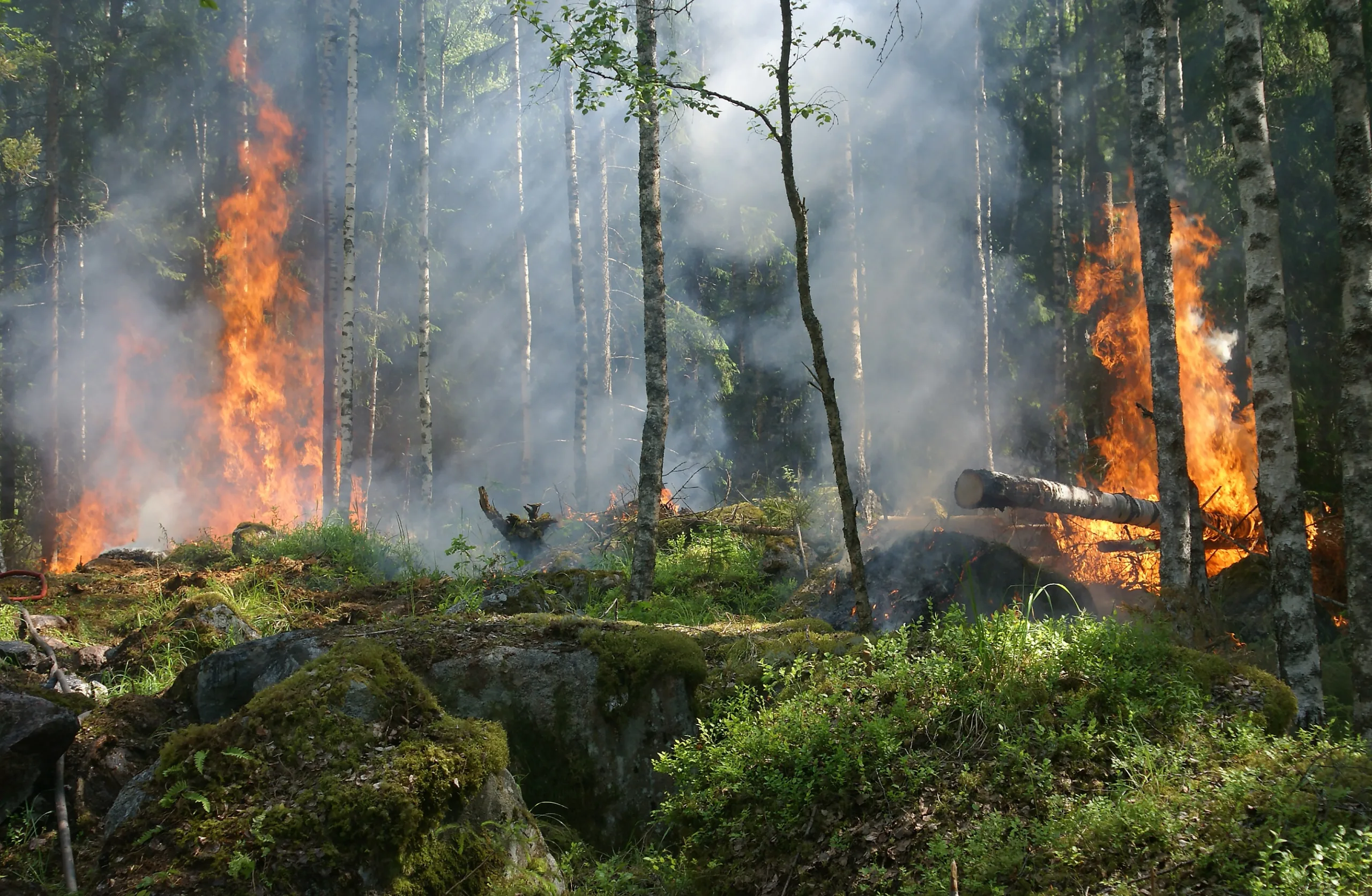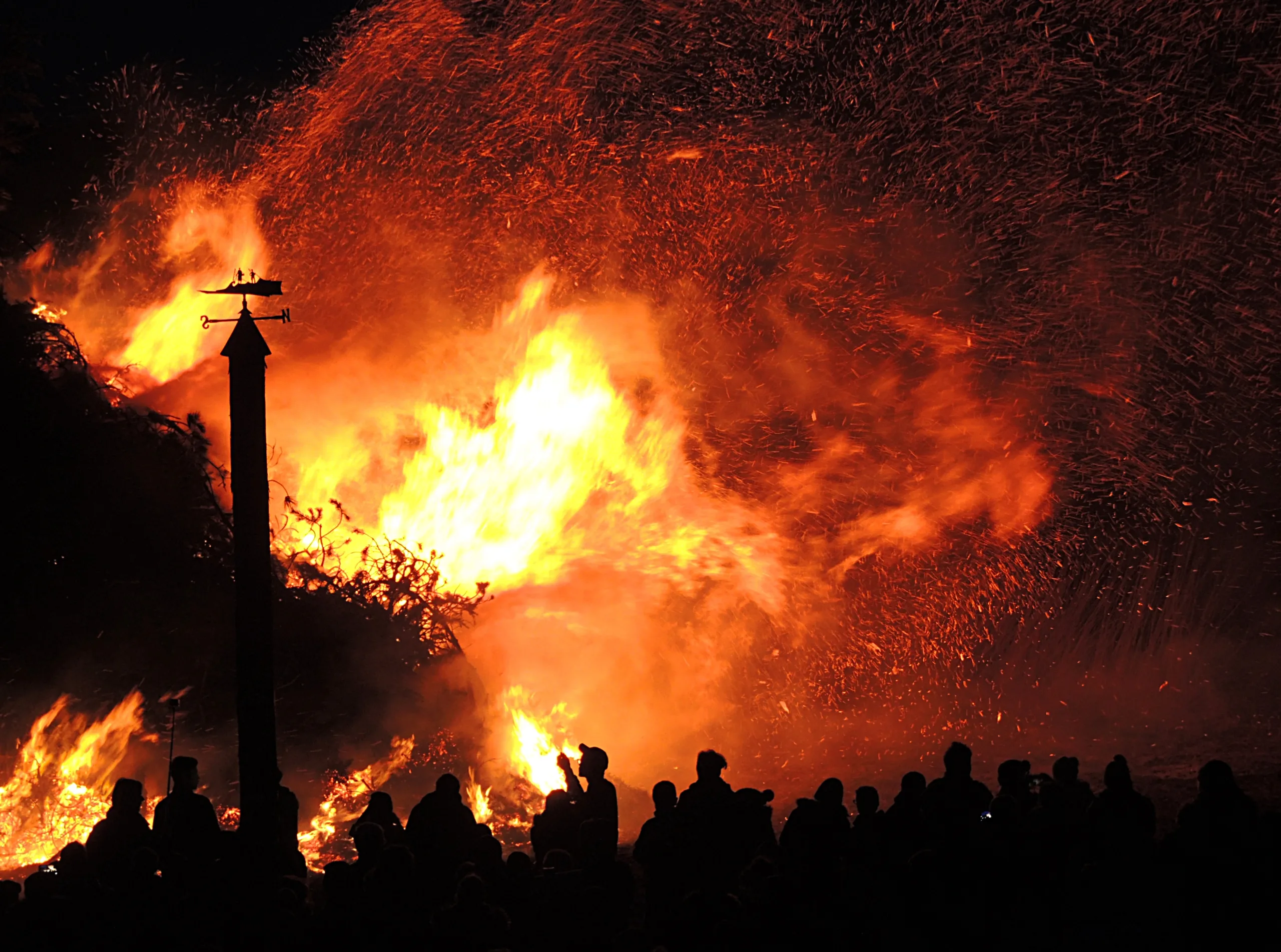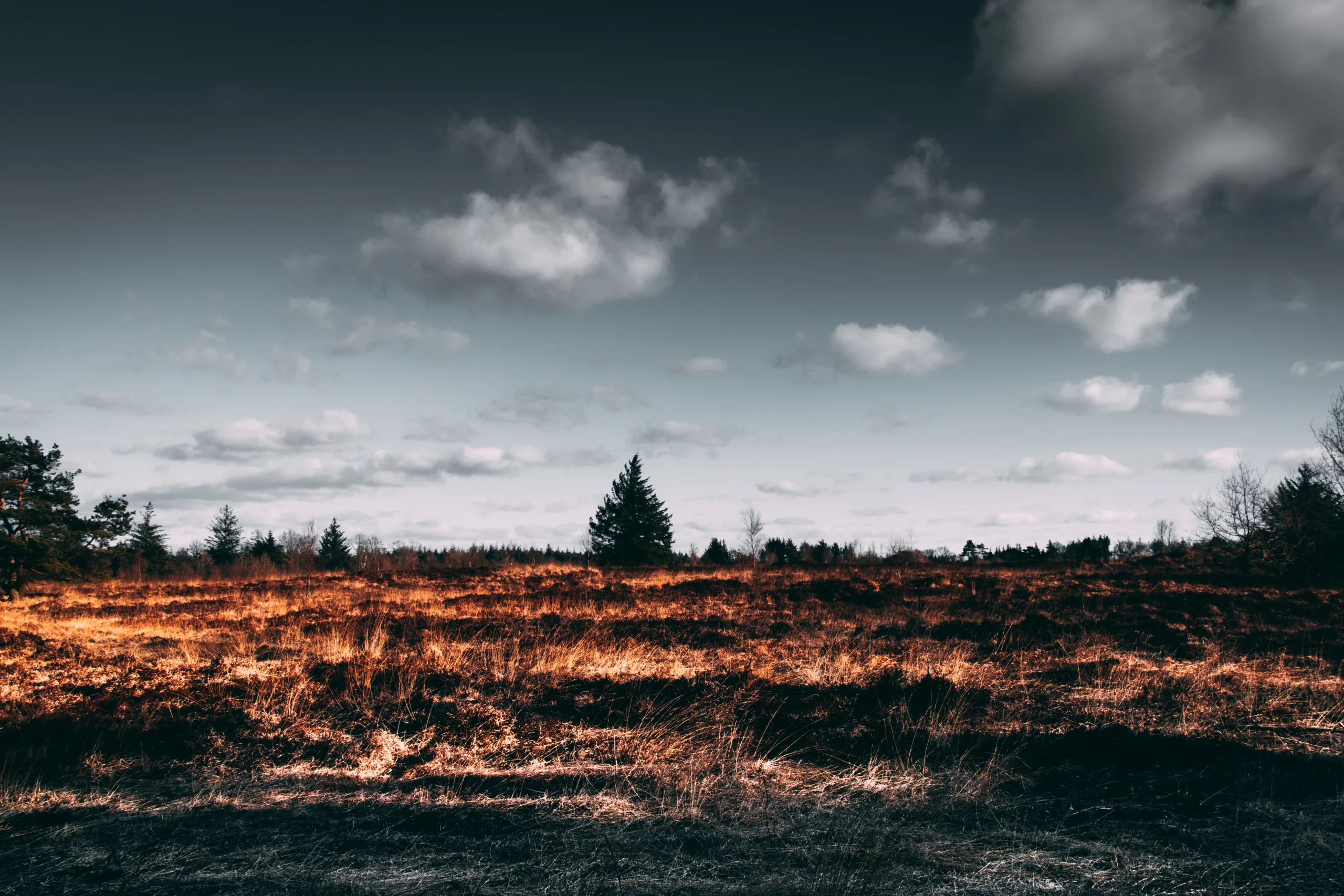Are Birch Trees Fire Resistant?
For homeowners in fire-prone areas, it is essential to know which trees are fire resistant. Knowing which trees are best suited for your property can help you protect your home and landscape during a wildfire. Birch trees have become increasingly popular in landscaping, but do they offer any protection against fire? This article explores the fire resistance of birch trees, as well as tips on how to keep your landscape safe during a wildfire.
The advantages of Birch Trees include their ability to provide ample shade, serve as a windbreak, and improve the soil quality. Additionally, they are a source of food and shelter for wildlife, making them an important part of any ecosystem.
What Makes Birch Trees Fire Resistant?
Birch trees have evolved to develop a resistance to fire, allowing them to survive and thrive in areas prone to wildfires. This natural fire-resistant quality is due to their thick bark, which provides insulation and protection from the flames of a fire. The bark of birch trees also contains natural oils that act as a fire retardant, further protecting the tree from the intense heat of a wildfire. The leaves of birch trees are also adapted to survive during wildfires, as they are covered in wax-like substances that help protect them from the intense heat and flames.
Birch trees are also very drought tolerant and can survive in areas with low rainfall levels. This means that even if there is a lack of water during a wildfire, it will not affect the birch trees’ ability to survive. Additionally, birch trees have shallow roots that do not go deep into the soil, making them less vulnerable to being uprooted by strong winds or fires. All these features together give birch trees an advantage when it comes to surviving wildfires.
The Natural Fire Retardant Properties of Birch Trees
Birch trees are known for their many uses and have been used by humans since prehistoric times. Among their many uses, birch trees possess natural fire retardant properties that can help protect against the spread of fires. Birch wood is dense and slow-burning, making it ideal for use in fire prevention.
The bark of birch trees is also an excellent fire retardant due to its high resin content. This resin helps to form a protective coating on the tree when exposed to heat or flames, which prevents the spread of fire from one area to another. The bark also acts as an insulator, helping to keep the tree cooler than surrounding areas during a fire.
Birch trees are also highly resistant to insect infestation and disease, which makes them even more effective as a natural fire retardant. The thick bark and dense wood make it difficult for pests and diseases to penetrate and cause damage, which can lead to dead patches of forest that can become fuel for a raging wildfire.
In addition, birch trees grow quickly and densely, making them an excellent choice for forest management plans that seek to reduce the risk of wildfires spreading through a region. By planting birch trees in areas prone to fires, landowners can help reduce the risk of large-scale destruction from wildfires by creating a natural barrier between flammable materials such as dry grasses or undergrowth and potential sources of ignition such as lightning strikes or campfires.
The natural fire retardant properties of birch trees make them an invaluable resource for land management plans that seek to reduce the risk of wildfires in wildland areas. By planting these trees in appropriate locations and managing their growth properly, landowners can help protect their property while also helping preserve these valuable resources for future generations.
How to Protect Birch Trees During a Fire
Birch trees are some of the most beautiful trees, and they can be found all over the world. Unfortunately, they are also susceptible to damage from fires. If you have birch trees in your yard or on your property, it is important to take steps to protect them during a fire. Here are some tips for protecting birch trees during a fire:
1. Clear the area around the birch tree of debris and vegetation that could easily catch fire. Make sure to keep mulch and other combustible materials away from the base of the tree.
2. Water your birch tree regularly and keep it well hydrated, as this will help protect it from heat and flames. If possible, water the entire area around the tree as well.
3. Trim back any dead or dry branches from your birch tree so that they don’t become fuel for a fire. Also make sure that any low-hanging branches are trimmed away from buildings or other structures on your property.
4. If you live in an area with frequent fires, consider planting drought-tolerant plants around your birch tree so that they can act as a buffer against heat and flames.
5. If you have to evacuate during a fire, make sure to cover your birch tree with wet blankets or tarps to protect it from heat and smoke damage.
By following these tips, you can help ensure that your birch trees remain safe during a fire. Keep in mind that even if you take all of these precautions, there is still no guarantee that your tree will survive a severe fire – but at least you’ll know that you did everything possible to protect it!
Why Birch Trees are Popular Choices for Fire-Prone Areas
Birch trees are an excellent choice for fire-prone areas due to their many desirable traits. They are fast-growing, hardy, and tolerant of a range of conditions. Birches are also highly resistant to fire, which makes them a popular choice for landscapes located in areas that are prone to wildfires. The bark of the birch tree is thick and does not easily burn, allowing it to protect the tree from the heat of the flames. Additionally, birches have a high moisture content which helps to protect them from drying out and catching fire. As a result, they are often used as a natural fire break in fire-prone areas.
Another advantage of using birch trees in these areas is their relatively low maintenance requirements. They require minimal pruning and fertilizing, making them less expensive to maintain than other types of trees. Additionally, they have shallow roots which makes them easier to transplant and less likely to be uprooted by strong winds or heavy rains. This makes them an ideal choice for areas that experience frequent storms or high winds.
Birch trees also provide environmental benefits such as providing habitat for wildlife and reducing soil erosion. The leaves of the birch tree attract beneficial insects such as butterflies, bees, and birds which can help regulate pest populations and pollinate plants in the area. Additionally, the roots help retain moisture in the soil which reduces erosion caused by wind and water run-off.
Overall, birch trees make an excellent choice for landscapes located in fire-prone areas due to their resistance to fire damage, low maintenance requirements, environmental benefits, and attractive appearance. Their fast growth rate means they can quickly provide shade and protection from the elements while their shallow roots make them easier to transplant than other types of trees. For these reasons, birch trees remain popular choices for landscapes located in wildfire prone regions.

Different Species of Birch Trees That Are Fire Resistant
Birch trees are some of the most beautiful and unique trees in the world, not just because of their striking white bark, but also because they are incredibly resilient and fire resistant. While all birch trees are relatively fire resistant, there are certain species that are even more so. Some of these species include Betula alleghaniensis (yellow birch), Betula lenta (sweet birch), Betula papyrifera (canoe birch), and Betula nigra (river birch).
Betula alleghaniensis, or yellow birch, is native to eastern North America and is one of the hardiest birch trees available. It is extremely tolerant of drought and loves full sun exposure. It is also highly resistant to fire damage, as its thick bark helps to protect it from the flames. In addition to being one of the most fire-resistant birches, yellow birch also has a beautiful golden-yellow bark that makes it a popular choice for landscaping projects.
Betula lenta, or sweet birch, also has a thick bark that helps it resist fire damage. Sweetbirch can be found in eastern North America and can reach heights of up to 50 feet tall with a trunk diameter of up to two feet. Sweetbirches have a reddish-brown bark that peels off in thin strips and they produce sweet-smelling sap when cut into.
Betula papyrifera, or canoe birch, is another very popular species for landscaping projects due to its paper-like white bark that peels off in thin layers. Canoe birches grow throughout Canada and parts of the United States and can reach heights up to 80 feet with trunks reaching two feet in diameter. The white bark helps protect this species from fire damage as well.
Finally, Betula nigra, or river birch, is an excellent choice for those looking for an attractive tree with good resistance to fire damage. This species grows throughout much of the United States and reaches heights between 40 and 80 feet with trunks reaching up to two feet in diameter. River birches have reddish-brown bark that peels off in thin strips similar to sweetbirches.
In conclusion, there are multiple different species of birch trees that are highly resistant to fire damage due to their thick bark. Some examples include Yellow Birch (Betula alleghaniensis), Sweet Birch (Betula lenta), Canoe Birch (Betula papyrifera), and River Birch (Betula nigra).
How to Identify a Fire Resistant Birch Tree
Birch trees are some of the most common trees in North America and Europe, and can be found in many different climates. They are known for their beauty and resilience, but they also have a unique trait that makes them especially valuable in areas prone to wildfires. Birch trees are naturally fire-resistant, meaning they can withstand the heat of a wildfire better than other types of trees. This makes them ideal for use as landscaping or for reforestation projects in areas that may be at risk for fires. Knowing how to identify a fire-resistant birch tree can help you choose the best tree for your needs.
The first way to identify a fire resistant birch is by looking at its bark. Most birches have white or light grey bark with black horizontal stripes, but some varieties have darker bark with vertical stripes instead. The darker bark is usually thicker and more resistant to heat than the lighter bark, making it more fire-resistant. Additionally, the bark on a fire-resistant birch tree will often be rougher and more ridged than other types of birches.
Another way to identify a fire-resistant birch is by looking at its leaves. Birches typically have small, pointed leaves with serrated edges, but some varieties have larger, rounder leaves that offer additional protection from heat and flames. Additionally, these larger leaves will often be thicker and more waxy than other types of birches, helping them retain moisture so they don’t dry out during a wildfire.
Finally, you can often identify a fire-resistant birch tree by its shape and growth pattern. Birches typically grow straight with few branches near the bottom of the trunk, but fire resistant varieties tend to grow in an umbrella shape with many branches near the base of the trunk. This helps create shade over the lower part of the trunk which can keep it cooler during a wildfire and protect it from direct heat exposure.
By learning how to identify a fire resistant birch tree you can choose one that is best suited for your needs and ensure that your landscape or reforestation project is well protected against wildfires in your area.
The Benefits of Planting Fire Resistant Birch Trees
Birch trees are a popular choice for landscaping, as they are eye-catching, low-maintenance, and fast-growing. But one of their most valuable benefits is the fact that they are fire resistant. This makes them ideal for those living in areas prone to wildfires, as well as for those who simply want peace of mind knowing that their home is safe from fire. Here are some of the reasons why planting fire-resistant birches can be beneficial:
First, birches have thick bark which helps protect them from catching fire. This means that even if a wildfire does hit your area, your birch trees will likely survive the flames. In addition, birch’s natural oils help to slow down the spread of any fires that do occur. This can help keep your property safe and reduce damage should a wildfire strike.
Second, planting birches can also create a natural fire break around your home. Not only will this help protect your home from an approaching wildfire, but it can also help reduce the intensity of any fires that do occur nearby. The dense foliage and wide branches of these trees also provide shade that can help keep the ground cooler and less likely to catch fire.
Finally, planting birches not only provides you with protection from wildfires but also adds aesthetic value to your landscape design. With their beautiful white bark and glossy green leaves, these trees make a stunning addition to any yard or garden. They also provide plenty of shade during hot summer days and act as windbreaks during winter months.
In conclusion, planting fire-resistant birch trees can offer many benefits for those living in areas prone to wildfires or anyone looking for additional protection against fires. Not only will these trees provide protection from flames but they will also add beauty to your outdoor space while providing plenty of shade and windbreaks during different times of the year.

Conclusion
Birch trees are naturally fire resistant due to the thick bark that is present on these trees. This makes them an excellent choice for areas where there is a risk of fires, as the tree will be able to withstand the heat and flames of a fire better than other trees. Additionally, birches are also relatively low-maintenance and easy to care for. While they may not be as fireproof as some other trees, birches offer a great option for protecting your property from potential fires.
In conclusion, birch trees are an excellent choice for those looking for a fire-resistant tree. The thick bark provides protection from the heat and flames of fires, while their low-maintenance nature makes them easy to care for over time. With proper maintenance, birch trees can serve as an invaluable asset in protecting your home or property from potential fires.

My interest in trees started when I first saw the giant sequoias in Yosemite.
I was a teenager then, and I remember thinking, “I need to learn more about this.”
That moment stuck with me.
A few years later, I went on to study forestry at Michigan Tech.
Since graduating, I’ve worked in a mix of hands-on tree care and community education.
I’ve spent over ten years helping people understand how to plant, maintain, and protect the trees in their neighborhoods.
I don’t see trees as just part of the landscape.
They are living things that make a real difference in our daily lives.
